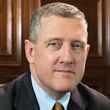President's Message: Is the Rate of Homeownership Nearing a Bottom?
The housing crisis has been central to our current recession. An economist at the Federal Reserve Bank of St. Louis, Carlos Garriga, has devoted much of his research to understanding the intricacies of mortgage markets and loan choices.
What insight might his research bring to the current environment? To begin, he has examined the evolution of homeownership rates and their connection with mortgage market innovations. For about a quarter of a century, the homeownership rate hovered around 64 percent. In 1966, it was at 63.5 percent. Twenty-seven years later, in 1993, it had barely budged to 63.8 percent. However, over the past 15 years, a significant change occurred, largely the result of government policy and innovations in mortgage markets.
Politicians pushed to increase the home-ownership rate on the premise that home-owners are more likely to maintain their property than a renter would. And, of course, almost every version of the American dream includes a house with a white picket fence.
In the early 1990s, the Federal Housing Administration (FHA) started to offer mortgage products with low down payments. Prior to this, most mortgage lenders required a 20 percent down payment on all new loans. The rationale for the down payment was to ensure that the home had enough equity to ward off foreclosure if home prices were to fall substantially. To qualify for a low down payment, homeowners had to buy lenders mortgage insurance or private mortgage insurance.
In the late 1990s, conventional lending became more sophisticated. To avoid mortgage insurance, lenders offered a second loan (at a higher interest rate) for a portion of the remaining loan amount. The advantage of the combo, or piggyback, loan was that borrowers could increase their leverage at a lower cost since mortgage interest payments could be deducted on their income tax, whereas mortgage insurance premiums were not deductible until 2007. The homeownership rate increased from 63.8 percent in early 1994 to 68 percent in 2002.
Over the following three years, the rate increased to 69.2 percent, in the heart of the housing boom. Over this period, subprime lending took off and additional mortgage products were introduced and became popular. These included zero down-payment loans, interest-only adjustable-rate mortgages (ARMs) and payment-option ARMs.
The last loan type allowed borrowers flexible monthly repayment strategies, including full amortization of principal with either zero or even negative amortization.
The bottom soon fell out. Since the end of 2006, nationwide home prices have fallen by as much as 30 percent. The homeownership rate has been steadily declining, too, since then. Through the second quarter of 2009, it was down 1.5 percentage points, to 67.4 percent. This decline reflects a rebalancing: Just as we saw the homeownership rate increase by a little over one percentage point as new mortgage products were introduced, we now see those buyers exiting the market as that equity disappears.
Assuming they could just "refinance later," they found themselves unable to make payments as prices tanked. Additionally, as Carlos recently discussed in the St. Louis Fed's National Economic Trends publication, refinancing denials started to increase well before the peak of the housing boom, suggesting that lenders were uncomfortable with the values being assessed to homes.[1]
These borrowers obtained financing through risky tools. If all borrowers who could obtain financing through standard financing options (i.e., not zero down-payment loans, interest-only loans, etc.) had already entered the homeownership arena, they would have already been captured within the 2002 rate of 68 percent.
The homeownership rate is now down below the 2002 level; it has remained at roughly 67.5 percent for three quarters (Q4 2008 through Q2 2009). Although further data are needed, this suggests the decline might now have bottomed out, provided the economic environment doesn't pull down otherwise well-positioned homeowners.
A natural question is to wonder whether the severity of the price decline will force additional homeowners out. During the 27 years that the homeownership rate hovered around 64 percent, there were many price fluctuations and yet no change in the ownership rate. The difference is that virtually no homebuyer was highly leveraged; almost all buyers had already paid at least 20 percent of the purchase price of their home. Hence, even as prices fell, homeowners were able to "ride out" the storm. Examining homeownership rates is one small but interesting piece of the puzzle. Government policy helped buoy the home-ownership rate to historic highs, and risky lending practices pushed it even higher. Time will tell where the new equilibrium rate will settle, but signs point to a near end in the decline.
Endnotes
- Garriga, Carlos. "Lending Standards in Mortgage Markets." National Economic Trends, May 2009, p. 1. See http://research.stlouisfed.org/publications/net/20090501
/cover.pdf. [back to text]
Views expressed in Regional Economist are not necessarily those of the St. Louis Fed or Federal Reserve System.
For the latest insights from our economists and other St. Louis Fed experts, visit On the Economy and subscribe.
Email Us


